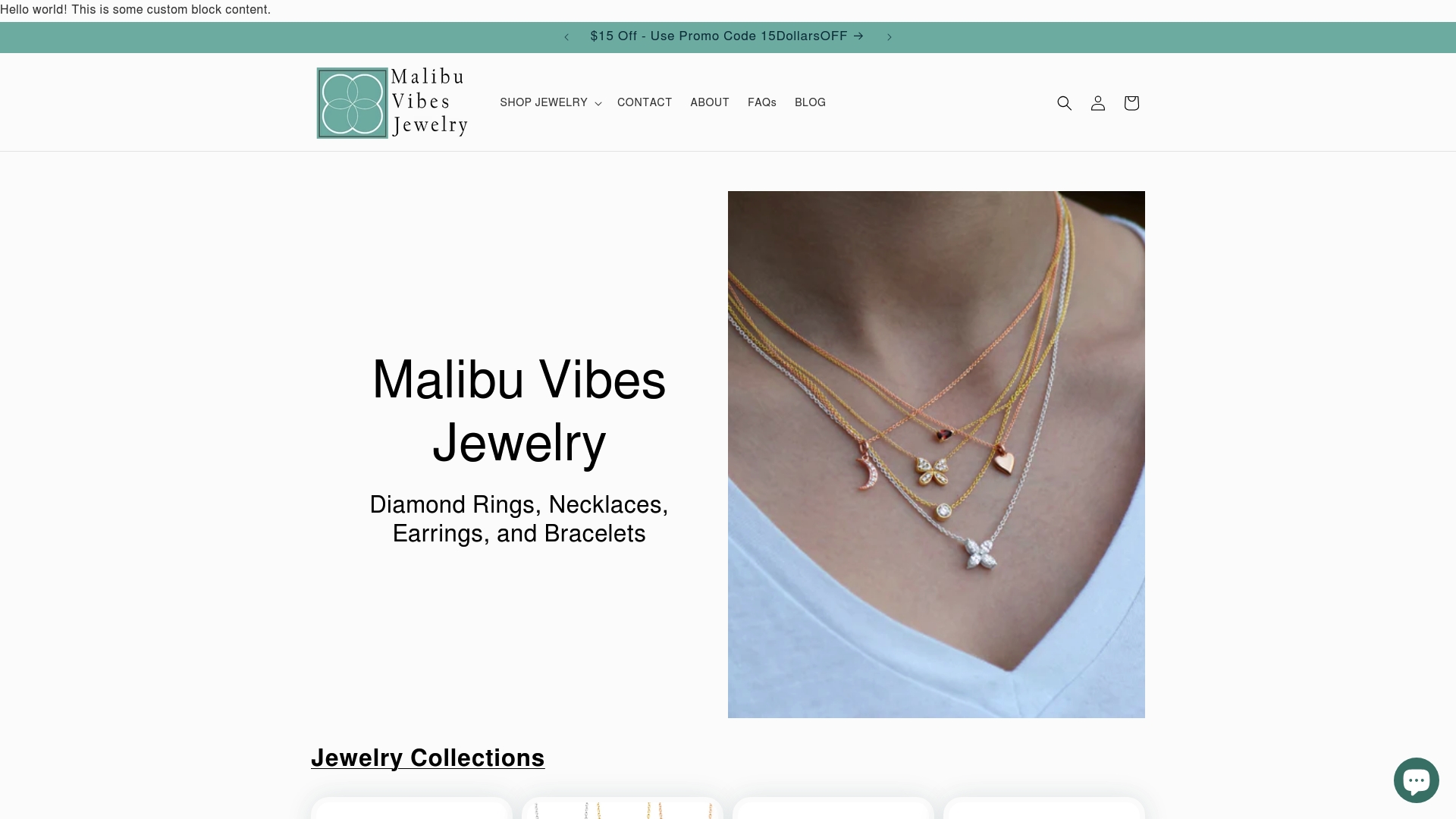Over 70 percent of jewelry buyers believe bezel settings are only about stone safety, yet this classic technique offers much more than protection alone. Whether you’re shopping for a new ring or redesigning an heirloom, knowing the truth about bezel settings can help you make smarter choices. This guide clears up common myths and reveals how bezels combine sleek design with solid craftsmanship to elevate both everyday and statement jewelry pieces.
Table of Contents
- Bezel Setting Defined And Common Misconceptions
- Types Of Bezel Settings In Jewelry
- Key Features And How Bezel Settings Work
- Advantages And Drawbacks Of Bezel Settings
- Bezel Setting Vs. Other Gemstone Settings
Key Takeaways
| Point | Details |
|---|---|
| Bezel Setting Overview | A bezel setting surrounds a gemstone with metal, offering both protection and aesthetic appeal. It can enhance the visual characteristics of the stone while ensuring security. |
| Types of Bezel Settings | Main categories include full, partial, and flush settings, each providing different balances of light exposure and stone security. |
| Advantages | Bezel settings offer excellent durability, minimal snagging risk, and a sleek appearance, making them ideal for active lifestyles and softer gemstones. |
| Comparison with Other Settings | Unlike prong and channel settings that maximize light exposure, bezel settings prioritize stone protection and contemporary design. |
Bezel Setting Defined and Common Misconceptions
A bezel setting is a sophisticated jewelry technique where a metal rim surrounds and secures a gemstone completely around its perimeter, creating a sleek, modern aesthetic that prioritizes stone protection. According to the Gemological Institute of America, this setting style offers both aesthetic elegance and exceptional durability for fine jewelry pieces.
Contrary to popular misconceptions, bezel settings aren’t just about protection. They represent a nuanced design choice that transforms how a gemstone interacts with light and surrounding metal. While some jewelry enthusiasts believe bezel settings reduce a stone’s brilliance, professional jewelers know these settings can actually enhance a gem’s visual appeal by creating a smooth, continuous line that draws attention to the stone’s unique characteristics.
Understanding the key features of bezel settings helps dispel common myths. Unlike prong settings that expose more of a gemstone, bezel settings:
- Provide maximum stone security
- Minimize potential snagging on clothing
- Create a streamlined, contemporary look
- Work exceptionally well with softer stones like opals or emeralds
For jewelry lovers seeking a blend of modern design and practical protection, bezel settings offer an unparalleled combination. The American Gem Society confirms that these settings aren’t just a stylistic choice but a strategic approach to preserving and showcasing precious gemstones in fine jewelry design.
Types of Bezel Settings in Jewelry
The world of bezel settings is surprisingly diverse, offering jewelry designers multiple approaches to stone placement and protection. According to the Gemological Institute of America, there are several distinctive types of bezel settings that cater to different aesthetic preferences and functional needs.
The primary categories of bezel settings include full bezel, partial bezel, and flush settings. A comprehensive guide on bezel settings reveals the unique characteristics of each style:
- Full Bezel Setting
- Completely encircles the stone’s entire perimeter
- Offers maximum stone protection
- Creates a smooth, contemporary silhouette
- Ideal for delicate or softer gemstones
- Partial Bezel Setting
- Metal covers only portions of the stone’s circumference
- Allows more light interaction with the gemstone
- Provides a balance between security and visual brilliance
- Popular in modern, minimalist jewelry designs
- Flush Setting
- Stone sits directly within the metal surface
- Extremely low profile and sleek
- Minimizes potential snagging
- Perfect for active lifestyles or understated elegance
The American Gem Society emphasizes that these variations aren’t just design choices but strategic approaches to stone presentation. Each bezel style transforms how light interacts with a gemstone, creating unique visual experiences that go beyond traditional setting techniques.

Key Features and How Bezel Settings Work
Bezel settings represent a sophisticated approach to stone mounting that prioritizes both aesthetic elegance and structural integrity. According to the Gemological Institute of America, these settings create a protective metal rim that completely or partially encircles a gemstone, transforming how jewelry interacts with light and movement.
The mechanical process of creating a bezel setting involves precision metalwork. A skilled jeweler carefully shapes a thin metal strip to match the exact contour of the gemstone, then meticulously folds and hammers the metal edge around the stone’s perimeter. This technique ensures:
- Exceptional stone security
- Minimal risk of accidental dislodgement
- Smooth, continuous metal line
- Reduced potential for catching on clothing
While traditional settings like prongs expose more of a gemstone, bezel settings offer a more integrated approach. The American Gem Society emphasizes that this setting style is particularly advantageous for individuals with active lifestyles or those seeking a sleek, modern jewelry aesthetic.
The real magic of bezel settings lies in their adaptability. Whether protecting a delicate opal or showcasing a brilliant diamond, these versatile settings can be customized to complement virtually any stone shape or design preference. From flush settings that sit nearly level with the metal to more prominent raised bezels, this technique offers jewelry lovers unprecedented flexibility in stone presentation.
Advantages and Drawbacks of Bezel Settings
Bezel settings represent a nuanced approach to jewelry design, offering a unique blend of aesthetic appeal and practical functionality. According to the Gemological Institute of America, these settings come with distinct advantages and potential limitations that jewelry enthusiasts should carefully consider.
The primary advantages of bezel settings include:
- Exceptional stone security
- Minimal risk of snagging on clothing
- Smooth, contemporary aesthetic
- Superior protection for softer or more fragile gemstones
- Ideal for active lifestyles
- Excellent for individuals with hands-on professions
However, the drawbacks are equally important to understand. The American Gem Society notes that bezel settings can potentially reduce a stone’s light reflection and overall brilliance compared to more open setting styles. This characteristic means diamonds and other transparent gemstones might appear slightly less sparkly when set in a full bezel.
Ultimately, the choice of a bezel setting depends on personal style, lifestyle, and the specific characteristics of the gemstone. For those seeking a balance between protection and elegance, partial bezel settings offer a compelling compromise. These settings provide enhanced security while maintaining more light interaction with the stone, making them an increasingly popular choice for modern jewelry design.
Bezel Setting vs. Other Gemstone Settings
The world of jewelry settings is diverse, with each style offering unique characteristics that cater to different aesthetic and functional preferences. According to the Gemological Institute of America, understanding the nuanced differences between setting styles can help jewelry lovers make more informed design choices.
Comparing bezel settings with other popular gemstone settings reveals distinct advantages:
Bezel vs. Prong Settings
- Bezel: Complete stone encirclement
- Prong: Minimal metal contact, maximum light exposure
- Bezel provides superior stone protection
- Prongs offer maximum brilliance
Bezel vs. Channel Settings
- Bezel: Individual stone mounting
- Channel: Multiple stones set side by side
- Bezel offers more flexibility in stone placement
- Channel provides a sleek, streamlined appearance
The American Gem Society emphasizes that each setting style serves a unique purpose. While prong settings maximize a diamond’s sparkle and channel settings create a smooth line of stones, bezel settings excel in durability and contemporary design.
For those exploring intricate gemstone cut variations, understanding these setting differences becomes crucial in selecting the perfect piece. The right setting can transform a beautiful stone into an extraordinary piece of jewelry, balancing personal style with practical considerations.

Discover the Perfect Balance of Style and Security with Bezel Settings
When choosing jewelry that truly stands the test of time, security and style should never be compromised. This article highlights how bezel settings ensure maximum stone protection, reducing the frustration of snagging or loose gemstones while offering a sleek, modern look. If you appreciate craftsmanship that blends durability with elegance, exploring Bezel Jewelry - Malibu Vibes Jewelry is your gateway to beautifully handcrafted pieces designed for everyday wear and special moments.

Elevate your collection today by selecting from our exclusive bezel set rings and necklaces that showcase precision metalwork and luxurious gemstones. Don’t wait to experience jewelry that protects your treasures and complements your style. Visit Malibu Vibes Jewelry now and find the perfect piece that reflects both your personality and practical needs. For dazzling color options, check out our 14k Color Gemstone Ring collection and turn your jewelry dreams into a reality.
Frequently Asked Questions
What is a bezel setting in jewelry?
A bezel setting is a technique where a metal rim completely or partially encircles a gemstone, securing it and creating a sleek, modern aesthetic while providing excellent protection.
What are the advantages of using a bezel setting for gemstones?
Bezel settings offer exceptional stone security, minimize the risk of snagging on clothing, and provide a smooth, contemporary look. They are especially beneficial for softer or more fragile gemstones.
How does a bezel setting compare to a prong setting?
Bezel settings encircle the stone for maximum security and protection, while prong settings expose more of the gemstone to light, maximizing its brilliance. Bezel settings are ideal for durability, while prongs highlight a stone’s sparkle.
Can bezel settings reduce a gemstone’s brilliance?
Yes, bezel settings can potentially reduce a stone’s light reflection and overall brilliance compared to more open settings like prongs. However, they maintain a unique beauty by enhancing the stone’s characteristics through a streamlined design.
Recommended
- Bezel Setting: Everything You Need to Know – Malibu Vibes Jewelry
- 7 Types of Gemstone Settings Every Jewelry Lover Should Know – Malibu Vibes Jewelry
- Solitaire Ring Explained: Styles, Diamonds, and Value – Malibu Vibes Jewelry
- What is Fine Jewelry? Understanding Luxury and Craftsmanship – Malibu Vibes Jewelry


